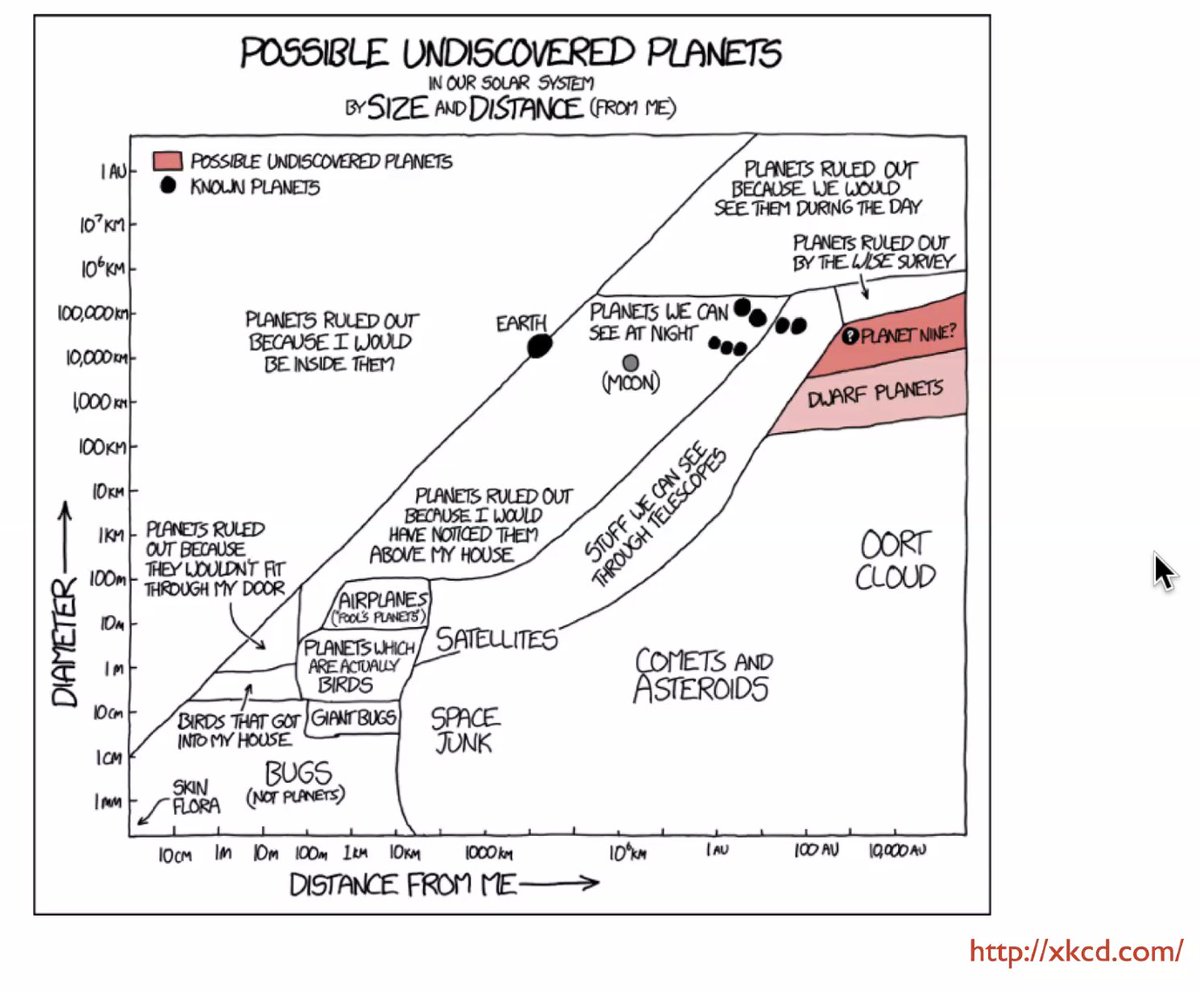One of my favourite parts of AAS meetings is attending plenaries way out of my subfield. Pleased to be able to still do that virtually #AAS237 -in "Comets, Unseen Planets, and the Outer Fringes of the Solar System", by Scott Tremaine.
I never thought about how comet brightness depends on distance^4 - 2 powers from the Sun to the comet, and 2 powers back to us on Earth.
Short period comets (P<20 yrs) are mostly found in/near the plane of the Solar system, while long period comets come from a roughly spherical blob around the Sun. Cool.
I enjoyed the G=M=1 explanation of Orbital Energy = 1 for the Earth (in theorist units!).
Cool - Tremaine explaining that the existence of the Oort cloud (as a set of comets bound to the Sun by gravity) rules out some alternative models of gravity! I love things like that.
Models suggest about an Earth mass of comets in the Oort cloud. That's a nice neat number.
Tremaine: the comets in the Oort cloud likely started in the disc of the solar system as left over material, and random walked out from kicks caused by interactions with planets (and eventually passing stars!).
Tremaine now talking about the discovery of Sedna in 2003 and how its existence suggests there must have been large planetary sized objects in the early Solar System, which no longer exist.
There should have been many Mars mass bodies, several Earth mass, and even some in the mass gap between Earth and the gas giants! Cool.
These objects may have gradually moved outwards rather than being completely removed from the Solar system. Tremaine now discussing what impact dark Earth mass planets in the outer Solar system would have.
Tremaine comparing this model to observations of the Oort cloud. Suggests it is likely (but not definite) there is a sub-Earth mass object in the outer Solar System. A possible "Planet X"
So we now get a history of suggestions of "Planet X's" and how they are currently scoring against the evidence.
IR surveys have ruled out planets of Jupiter or Saturn mass within 80,000 or 30,000 AU respectively.....
However Earth mass sized planets are harder to detect.... the @VRubinObs will be awesome - but not all sky. Some CMB experiments can provide constraints.
Even pulsar timing can provide constraints on Earth mass planets in the outer solar system. A nice side project for @NANOGrav :)
Tremaine concludes that these methods might detect a possible "Planet X" but could not rule out an Earth mass object in the Oort cloud completely.
Tremaine ending with the @xkcdComic summary of "Planet X" constraints.
Just to reflect that it's kind of awesome that there could still be undiscovered planets in our own Solar System... really bringing home to me how much more there is to learn and do in astronomy.

 Read on Twitter
Read on Twitter



